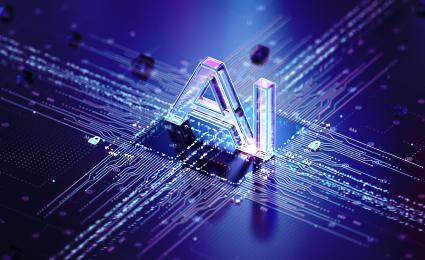Learn how Roland Berger helps operating partners turn buzz into bottom-line impact.


A look into the future: Can autonomous AI agents manage capital projects?
By Uwe Hörmann and Markus Kaufmann
Trillions in infrastructure and energy are at stake - can AI succeed where most capital projects fail?
Investments in infrastructure, energy and production assets are witnessing a massive resurgence across the globe. Globally, governments and private entities are ramping up more than USD 3 trillion in investments in 2025 alone to modernize aging infrastructure and embrace new technologies, paving the way for a new era of digital transformation and decarbonization.
However, the performance of capital projects is concerning, and many fail to meet their required cost of capital. Studies indicate that a significant majority do not deliver on budget, on time, or with the anticipated benefits with Flyvbjerg reporting that nine out of 10 projects fall short.

"Capital projects are data-rich, but insight-poor. AI can turn this imbalance around by transforming scattered data into real-time intelligence for better decisions."
Since humans seem to be failing at delivering complex capital projects , are AI agents the answer to finally get capital projects on track?
Imagine yourself – as project owner, developer or sponsor – in a future where AI agents oversee your complex capital projects, supporting your decision making and delivering both on time and budget:
At project definition, your AI agent integrates feasibility studies with sector studies, investment roadmaps, as well as real-time market data, points out incoherencies and validates commercial viability based on project-specific planning data as well as benchmarks. It breaks project descriptions down into useable work structures and underlying schedules, fills these structures with data by providing standard sequences as well as specific duration assumptions based on project parameters.During development, it harmonizes different engineering designs and manages procurement, ensuring materials are sourced in target. It optimizes scheduling for the project execution, pointing out risks, and critical paths.Your supply market screening agent manages the sourcing process, generating requests for quotations, comparing offers and supporting negotiations.
As execution begins, the AI agent monitors the scheduled construction, collecting and integrating new activities from different stakeholders and updating activity durations and progress. If necessary, it adapts the schedule to disruptions and other events, synchronizes plan updates across underlying schedules and identifies synchronization issues. Mitigation measures are derived and communicated towards all stakeholders. During construction, drones are deployed for site monitoring, increasing workforce safety and providing real-time updates, which are integrated into progress reports by your agentic AI. Stakeholders receive instant and personalized reports, eliminating the need for additional administrative staff and often time-lagging, manual updates of progress reports.
Your agentic AI effectively supports your decision making by providing tailored KPI input from your project database as well as AI-assisted scenario analysis. Your AI agent screens early warning indicators and performs critical path assessments to then send out automated escalation messages, always putting you in the driver’s seat. Lastly, the commissioning process runs flawlessly, with the AI conducting simulations to ensure systems operate efficiently.
"AI is already transforming capital projects—from document management to risk forecasting. The value lies not in replacing people, but in freeing them to focus on strategic decisions."
Data gaps and human conflict: Challenges to AI deployment
Currently, most capital projects are not set-up for efficient data usage and – if at all – only use singular, isolated AI use cases. Project owners, developers and sponsors fail to allocate time and expertise during project definition to set up AI readiness. They also lack a contractual framework for smooth and standardized data sharing across different stakeholders involved throughout the project life cycle. Equally important is the fact that many project delays occur due to misaligned stakeholder interests – conflicts that cannot be solved by AI alone.
So, where and how can you unlock value from AI in complex project management?
Beyond the hype: Where automation and AI will unlock value over the next two years
By embracing automation and AI, project owners, developers and sponsors can enhance their project management capabilities, drive efficiency, and ultimately realize significant cost savings in their capital projects.
While AI agents will not replace much-needed human project management expertise, they can certainly enhance validity of project planning and scheduling. Throughout your capital project, we see several use cases that can be employed with moderate need for customization. These use cases can significantly enhance your transparency and decision making, while simultaneously reducing manual labor and human error.
Project definition and development
Ramp-up internal knowledge and structure document management: AI tools can help aggregate data, synchronize project and engineering plans (including transferring design data into time schedules), detect synchronization issues or design flaws, and enhance transparency in document management. This can significantly reduce design errors and rework.
Project execution
Mine, synchronize and structure dataThroughout project execution, your AI-enhanced knowledge base can act as your single-source-of-truth and collect, integrate and check project related-data, from progress tracking and claims to identifying documentation, and linking and merging relevant data and interfaces.
Scheduling and resource management: Implement quality checks and synchronize various schedules while integrating risk analyses. AI-driven software can help to efficiently allocate resources by analyzing historical and forecasted data to anticipate future needs.
Progress tracking, documentation and reporting: Utilize a combination of data inputs, from manual entries to image, video, and sensor data, to visualize project progress. This approach reduces manual labor and human error, accelerates data preparation, and enhances transparency for decision-making
Risk management : Utilize machine learning algorithms to assess project risks based on historical data and current project parameters. By identifying potential pitfalls early, teams can proactively implement mitigation strategies.
Construction monitoring: Use drones or camera-equipped construction hats for site monitoring. AI applications can convert, analyze and visualize project data, i.e. for status reports. Additionally, drone and camera-based inspections can be used to identify safety hazards and enhance site supervision.
Contract and claim management: AI-based tools can selectively support in analyzing claims, responding to claims, initiating and drafting counter-claims, among other tasks, based on comprehensive access to contracts and project data such as progress, costs, invoices, contract documents, journals, and letters.
Dispute settlement: Development of holistic (end-to-end) AI-supported solutions from conflict through claim to resolution foreseen for the future.
Unlocking value with AI: Prerequisites for project developers
So how do you unlock value through AI-enhanced project management? As project owner, developer, or sponsor, there are numerous areas in which you should invest time and expertise throughout the project definition.
1. Identify relevant AI use cases
Define objectives and key results: Establish clear objectives for your data strategy and AI governance. Ensure that these objectives guide your approach to data mining, structuring, and labeling in real-time.Avoid data graveyards: Create a strategy to ensure data is actively utilized and not left unstructured or unused.Select appropriate algorithms: Determine where machine learning or generative AI is necessary and where rule-based algorithms will suffice based on project needs.
2. Establish IT infrastructure
Assess and define the IT infrastructure required to effectively leverage data and AI applications.Plan for seamless integration with your existing IT landscape to ensure compatibility and efficiency.
3. Evaluate existing AI offerings and proprietary solutions
Compare existing AI applications to assess whether they meet your needs or if there is a necessity to develop proprietary AI solutions.Perform a thorough cost-benefit analysis for each AI application under consideration. Evaluate the potential return on investment, including both tangible and intangible benefits, to ensure that the chosen solution aligns with your project's financial objectives.
4. Ensure data sharing and compliance
Develop and implement standardized protocols for data sharing among all project stakeholders.Define the necessary formats, labeling, and frequency of data sharing to maintain compliance throughout the project lifecycle.
5. Build organizational capabilities
Identify any additional capabilities needed within your project organization to continuously monitor and improve AI applications.Assess whether these capabilities can be developed internally or if there is a need to seek external expertise to support your project goals.
Sign up for Roland Berger Email Updates to receive regular news and invitations related to infrastructure topics directly in your inbox.









